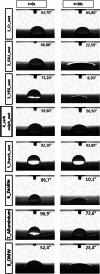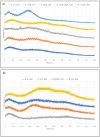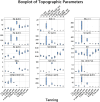Comparative characterization of leather from different tanning processes as a contribution for a sustainable development of the leather industry
- PMID: 40148412
- PMCID: PMC11950221
- DOI: 10.1038/s41598-025-94531-y
Comparative characterization of leather from different tanning processes as a contribution for a sustainable development of the leather industry
Abstract
Leather is a fully biobased material (100% biodegradable organic material, with collagen as the main constituent), derived from food industry byproducts (animal skin from butchery), which represents an excellence for the Italian industry (in the last years the production value reached 4.6 billion euros and an export of 3.2 billion euros) and a highly sustainable material. However, its production is still strongly handicraft, traditional and unfortunately based on the employment of toxic chemicals, such as chromium and glutaraldehyde. A deep knowledge of the tanning process and of the specific features of leather coming from different processing routes is crucial for the design and development of innovation in the field for a more sustainable and knowledge-based production. In this contest, the impact of tanning process on the surface reactivity of leather plays a crucial role. In the present research well established characterizations (optical microscopy, shrinkage temperature, wettability, metal content, infrared spectroscopy and X-ray diffraction) and new and unconventional methods for the leather field (surface topography, instrumented indentation and zeta potential electrokinetic measurements) were applied and optimized for the characterization of leather samples from traditional (e.g. Chrome and Glutaraldehyde) and innovative (e.g. vegetable, carbamoyl sulphate, starch, aluminum, zeolite, triazine and Olive Mill Wastewaters -OMW) tanning processes. The suitability of the characterization protocol for the in-depth investigation and comparison of leather samples from different processing has been demonstrated highlighting its applicability for a knowledge-based innovation in the leather field.
Keywords: Instrumented indentation, tanning; Leather; Surface characterization; Zeta potential.
© 2025. The Author(s).
Conflict of interest statement
Declarations. Competing interests: The authors declare no competing interests.
Figures









References
-
- UNIC Sustainability Report 2022.
-
- UNIC Business overview. on Italian tanning industry (2022).
-
- Masilamani, D., Ariram, N., Madhan, B. & Palanivel, S. An integrated process for effective utilization of collagenous protein from Raw Hide trimmings: valorization of tannery solid wastes. J. Clean. Prod.415, 137705. 10.1016/j.jclepro.2023.137705 (2023).
Grants and funding
LinkOut - more resources
Full Text Sources

